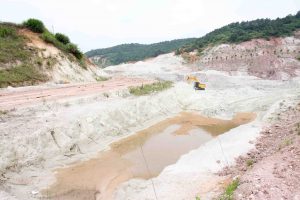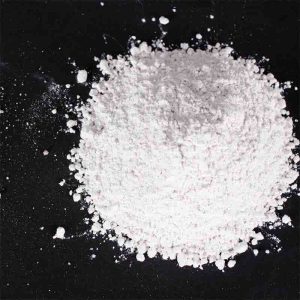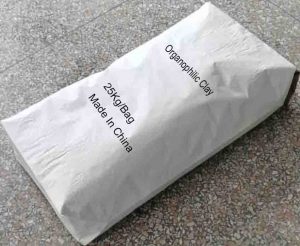
organophilic clay test method
Regarding organophilic clay test method,CP series organophilic clay is made from high-quality sodium bentonite through high purification, modification and ion exchange inserting organic covering agent. It is a product with organoclay structure. If you want to better exert the effect of organophilic clay, you must Separate the sheet structure. This process and treated usually requires the provision of corresponding mechanical, chemical and thermal energy.
organophilic clay hs code : 2508 1000

How to use organophilic montmorillonite clay :
There are two methods for adding organophilic montmorillonite clay: dry powder method and pre-gel method.
Dry powder method |Organophilic clay :
Many organophilic clay manufacturers or organophilic clay suppliers guide end user to add dry organophilic clay powder during the production process directly without add polar activators. Such organophilic clay are CP-10, CP-10A, CP-MPZ, CP-EZ, CP-APA.
Pre-gel addition method:
Many organophilic clay manufacturers or organophilic clay suppliers guide end user to make pre gel for resin systems with poor wettability (such as epoxy, polyester, short oil alkyd resin, etc.), use CP series organophilic clay, and pre-gel is suitable.
The composition of the pre-gel: solvent 87%, organophilic clay chemistry 8-10%, polar activator 3-4%.
Pre-gel preparation process: solvent + organophilic clay chemistry (mixing and stirring for 10 minutes, fully wetted), and then adding polar activator (stirring for 5 minutes, fully swelling)
organophilic clay dispersion
Dispersion speed
No matter what method is used to add, the organophilic clay must be thoroughly dispersed and become a gel, so that it can have the thixotropy, anti-settling and thickening effects of organophilic clay. This dispersion requires external high shear force, such as the use of a high-speed disperser, Three-roll mill, colloid mill, sand mill or ball mill. If the shear force is large, or the activation energy is large, it is easy to obtain a gel. The effectiveness of organophilic bentonite clay increases with the increase of the line speed of the high-speed disperser.

Dispersion temperature
Increasing the temperature can also improve the gel properties. Under the same other conditions, the thickening of pre-gel with cold solvent (0℃-5℃) is lower than that of pre-gel made with high-temperature solvent. But the dispersion temperature should not exceed the boiling point of the activation solvent.
Activator
Polar additives can help layered organophilic bentonite clay easily form a certain layered structure, and form a thixotropic colloid. Polar additives such as ethanol, methanol, acetone, propylene carbonate, generally account for 30%-50% of organophilic bentonite clay.
Moisture
organophilic bentonite clay must have sufficient water to make it develop into a pre-gel of the grid structure. The water molecules form a bridge of the grid structure. Therefore, the organophilic bentonite clay should not be over-dried. Generally, about 3.5% water content is appropriate, and polar additives are not suitable. Use anhydrous, preferably with a polar activator content of 95% (5% moisture).
Application of organophilic clay drilling mud
Oil-based mud can effectively drill through various complex formations. In the case of mudstone shale, gypsum, and salt layers that are not easy to expand, organophilic clay drilling mud can prevent collapse and sticking; because it can prevent mud expansion, it is beneficial to protect the permeability of oil and gas layers. Therefore, it is suitable for low pressure or high pressure oil and gas reservoirs. High temperature stability, suitable for drilling ultra-deep wells, oil-based mud can withstand the corrosion of CO2 and H20 to metals, can prolong the life of the drill bit, and can be used as a core drilling fluid.
The oil-based jam-free mud is mainly used to solve the pressure difference sticking accident that occurred during the drilling process. The oil-based jam-free mud has good rheological and fluid loss performance, strong anti-pollution ability, and low filter cake viscosity coefficient.
In the formulations of emulsified oil-based drilling mud, inverse-emulsified oil based drilling mud, all oil-based drilling mud, and oil based destabilizing mud, when the solvent is diesel based oil, choose CP-982, CP-2. hectorite organophilic clay, and the solvent is mineral oil When it is mainly used, CP-4 hectorite organophilic clay is preferred, which can make the mud have good suspension, layer-carrying, wall protection and anti-filtrate effects. When the medium pressure and temperature are at 108pa and 230℃, it still maintains stable physical and chemical properties.
Application of CP series in lubricating grease

For lubricating oil containing organophilic attapulgite clay, to achieve the most ideal effect, it is necessary to add a polar activator to the system. The activator needed for lubricating oil produced with CP series organophilic attapulgite clay is:
Acetone, methanol (95%), ethanol (95%), propylene carbonate, glycol ether derivatives
Generally, the preferred activators are propylene carbonate and glycol ether derivatives, because the use of acetone and methanol (95%) and ethanol (95%) will cause the flash point of the grease to be lower. Using CP series organophilic attapulgite clay, such as CP-40,CP-388 grease produced, requires high shear force in the final stage to achieve the desired expansion, and the use of colloidal mills can achieve high shear force.
How to add organophilic clay CP-388:
1. Heat the oil to 60-80℃.
2. While stirring, add CP-388 (6-10% of the total formula) and stir for 10-20 minutes.
3. Add polar activator (3% propylene carbonate in the total formula), then add additives and preservatives, antioxidants, metal deactivators, and stir for 25-30 minutes.
4. Use a pump to pass it through a colloid mill or homogenizer.
5. Degas, filter and pack lubricating oil.
How to add organophilic bentonite CP-40:
1. Heat 1/3-1/2 of the oil to 60℃
2. Add CP-40 (6-10% of the total formula) while stirring and stir for 10-20 minutes.
3. Add polar activator (3% propylene carbonate of the total formula) and stir for 25-30 minutes.
4. Under stirring, add the required additives to the remaining oil and stir for 25-30 minutes.
5. Use a pump to pass the entire mixture through a colloid mill or homogenizer.
6. Degassing, filtering and bagging lubricants.
Advantages of lubricants using organophilic attapulgite clay:
1. These high boiling point greases are used at high temperatures
2. Based on organic bentonite gelling agent, the lubricating oil can maintain good lubricity even at low temperatures.
3. The gelling agent lubricant has excellent anti-bleeding properties
4. It has excellent water resistance.
We look forward to receiving your inquiry.
Email: [email protected]
Cel (Whatsapp / Wechat):+86-13185071071
